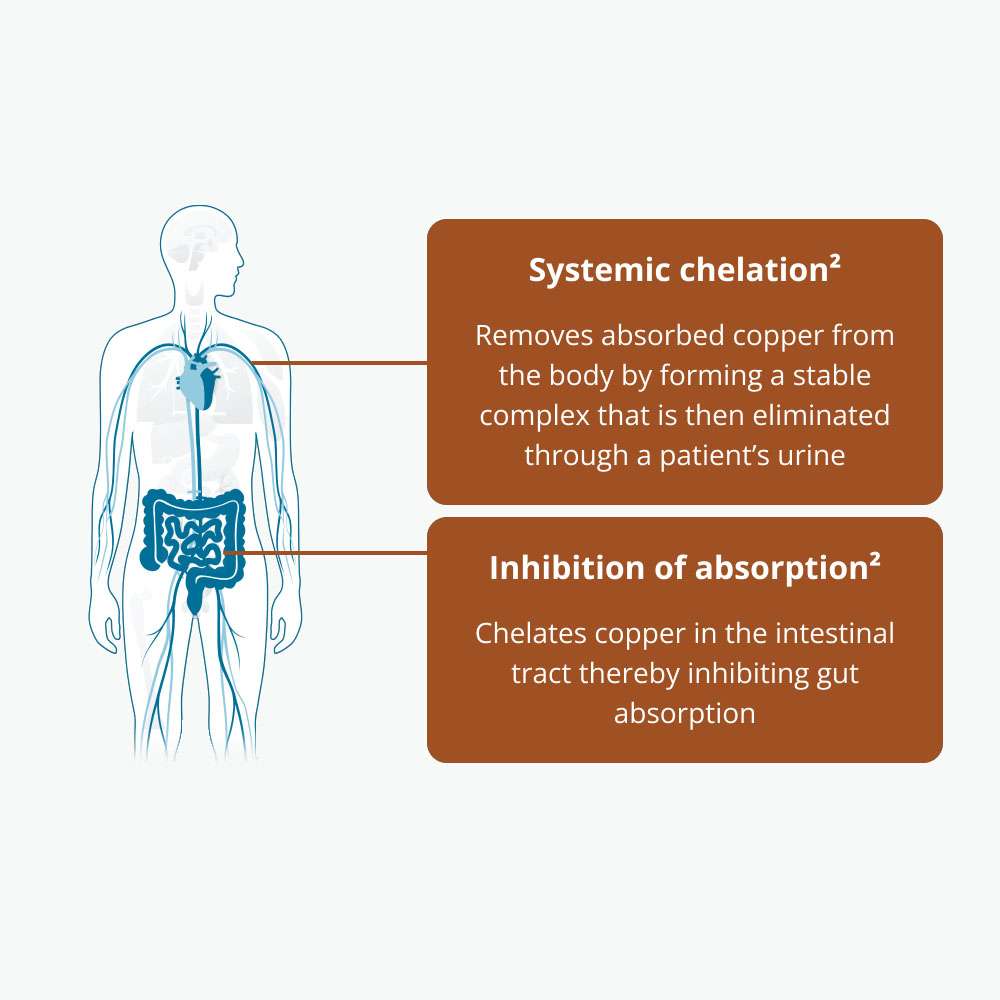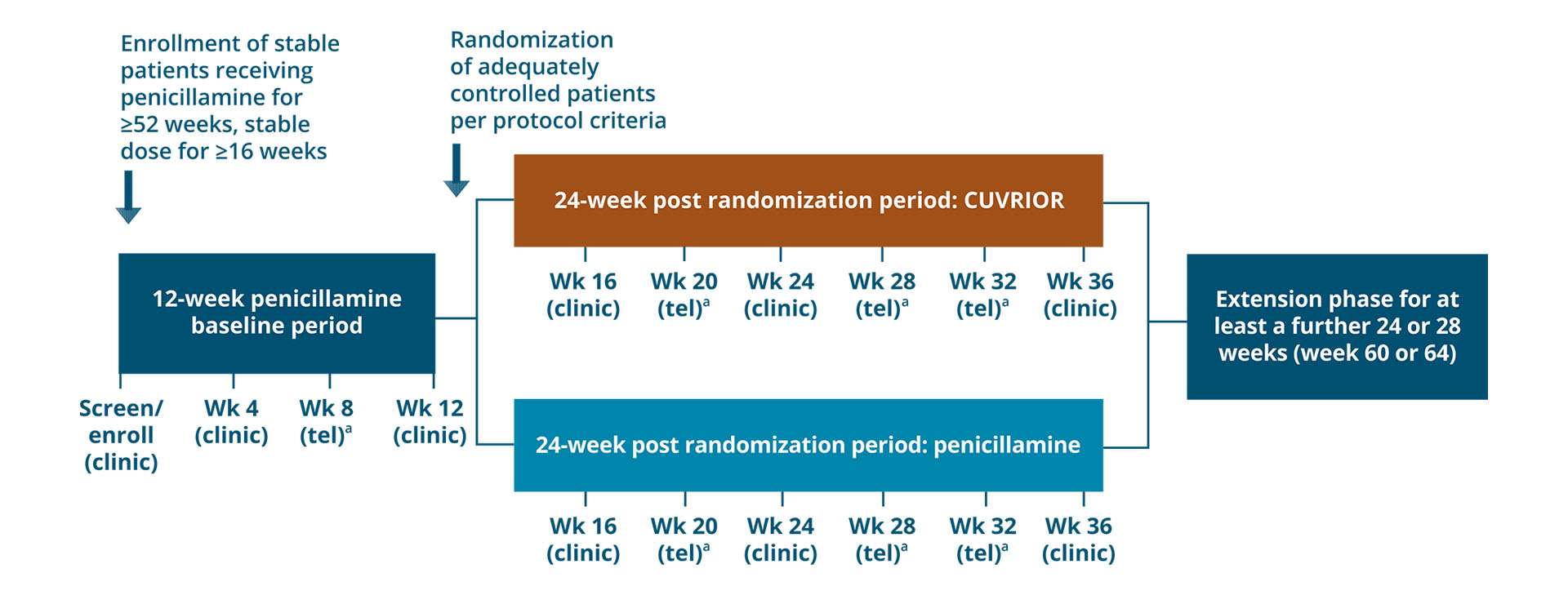
The starting total daily dosage of CUVRIOR in adults ranges from 300 mg to 3000 mg orally in divided doses taken just 2 times a day.2
Aged 18 to 75 years with stable WD (N=53)
Measurement of free copper in serum by non-ceruloplasmin-bound copper (NCC) by speciation (NCC-Sp) assay at 24 weeks post-randomization
cNCC-Ex (non-ceruloplasmin-bound by copper exchange assay) was initially used for screening and therapeutic monitoring and was intended to be used to evaluate the primary endpoint; however, it was found to be unreliable. Orphalan, with the FDA’s endorsement, created a novel 2-step method—NCC-Sp—that was used for this trial and not commercially available.1

Mean difference at 24 weeks post-randomization in serum NCCa, measured by NCC-Sp assay, was –9.1µg/L (95% CI: - 24.2 to +6.1)1

bAbdominal pain is composed of several similar terms.2
cIncludes constipation, abnormal feces, soft feces.2
dRash is composed of several similar terms.2
No refrigeration provides on-the-go potential.
The starting total daily dosage of CUVRIOR in adults ranges from 300 mg to 3000 mg orally in divided doses taken just 2 times a day.
Administer CUVRIOR2 on an empty stomach:
1. Schilsky ML, Czlonkowska A, Zuin M, et al. Trientine tetrahydrochloride versus penicillamine for maintenance therapy in Wilson disease (CHELATE): a randomised, open-label, non-inferiority, phase 3 trial. Lancet Gastroenterol Hepatol. 2022;7(12):1092-1102. 2. CUVRIOR [package insert]. Chicago, IL: Orphalan SA. 3. CUVRIOR-trientine tetrahydrochloride tablet, film coated. National Library of Medicine website. Accessed September 5, 2023. https://dailymed.nlm.nih.gov/dailymed/drugInfo.cfm?setid=f73feeae-62ad-401e-b9f7-5cb269127750 4. GALZIN-zinc acetate tablet capsule. National Library of Medicine website. Accessed September 5, 2023. https://dailymed.nlm.nih.gov/dailymed/drugInfo.cfm?setid=a0c72bff-20f3-4241-b966-34a95178d1a3 5. CUPRIMINE-penicillamine capsule. National Library of Medicine website. Accessed Septemebr 5, 2023. https://dailymed.nlm.nih.gov/dailymed/drugInfo.cfm?setid=80e736d3-2017-4d68-94b4-38255c3c59c6 6. SYPRINE-trientine hydrochloride capsule. National Library of Medicine website. Accessed September 5, 2023. https://dailymed.nlm.nih.gov/dailymed/drugInfo.cfm?setid=c34f77a7-996b-4470-b5df-d946a7fe5dbe 7. Brewer GJ, Askari F, Lorincz MT, et al. Treatment of Wilson disease with ammonium tetrathiomolybdate: IV. Comparison of tetrathiomolybdate and trientine in a double-blind study of treatment of the neurologic presentation of Wilson disease. Arch Neurol. 2006;63(4):521-527. 8. Data on file. Orphalan, Inc.
CUVRIOR is a copper chelator indicated for the treatment of adult patients with stable Wilson disease who are de-coppered and tolerant to penicillamine.
The most common adverse reactions (>5%) are abdominal pain, change of bowel habits, rash, alopecia, and mood swings.
To report SUSPECTED ADVERSE REACTIONS, contact Orphalan at 1-800-961-8320 or FDA at 1-800-FDA-1088 or www.fda.gov/medwatch.
Please see full Prescribing Information.